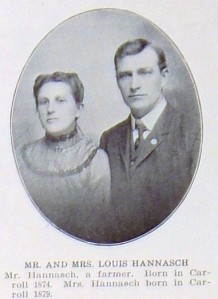New Year’s Day, 1863 dawned with surprisingly cold skies. The weeks before had felt more like early summer, but the sudden cold snap reminded the people of Virginia that it was, indeed, the Christmas season. History would later call this a special day, the day President Abraham Lincoln signed the Emancipation Proclamation and freed the slaves of the Civil War south.* But it made no difference to Elizabeth. For one thing, like a third of the black people who lived on the Eastern Shore, she was already free. And even if she weren’t free, the Eastern Shore was an exception, decreed in the document to be left “precisely as if this proclamation were not issued.”

Photo courtesy of Eastern Shore Public Library
So begins the project I just finished. African American genealogy is new to me, and I tiptoed into it the way you might wade into a muddy swamp. I knew the tangled vines and quicksand were there – I just couldn’t see them. But this project was for a friend, so I really wanted to do it despite the challenges.
When I began this project I assumed I would hit a wall in records before 1865, the year the Civil War ended. I knew that slaves weren’t enumerated by name in census records and that birth, marriage and death records would be almost non-existent.
How lucky, then, that this family turned out to be part of a free black community in Accomack County, Virginia. There they were, in census records beginning in 1800. And – joy! – a tiny handful of vital records had survived. It was enough to get started, and I turned to my usual favorite research sites.
Hah.
There were no cemetery records – unmarked graves were the norm for people of color. There were no church records or newspaper accounts, no city directories, and no military anything. So I put on my beginner’s mind and started fresh. What did I want to know? Who could help me?
Three resources were profoundly helpful to me. So helpful, in fact, that they’ve inspired me to start my own little “Gratitude Grants” program. Beginning with this project, I will donate a percentage of my project fees to a non-profit organization (or two – or three!) that was crucial to my research.
- Accomac Roots** is clearly a labor of love, an effort to uncover and preserve the heritage of the black families living in Accomack County. Their work was a solid stepping stone for me in understanding the local culture of the time, not to mention the family lines.
- Library of Virginia has preserved many unusual records, including deeds of manumission (the documents used to free slaves) and early census records of free blacks. Using interlibrary loan from my own beloved public library I was able to access all of this information for practically nothing.
- Eastern Shore Public Library. Because the family I was researching had very common first names and very few records, it was incredibly useful to research the white families they were living near or working for. The ESPL’s Miles Files helped me untangle the families, wills, and land records that indicated where and how my research subjects were living.
To Accomac Roots, The Library of Virginia, and Eastern Shore Public Library – thank you! The check is in the mail.
——————————
* Today we imagine this momentous event happening with speeches, banners, balconies, and cheering crowds. In fact, it was just a single sheet of paper, signed without ceremony in front of a handful of people, then sent to the Department of State to be sealed and deposited in the government archives. http://www.eyewitnesstohistory.com/emancipation.htm
** Don’t get hung up on the spelling. Accomac is a town in Accomack County, which adopted the “k” in later years just to confuse genealogists.
Read Full Post »
 Today’s happy discovery is AmericanAncestors – New York Resources. AmericanAncestors is the reincarnation of the old New England Genealogical Historic Society web site, which – hello, has the words NEW ENGLAND in it – and therefore doesn’t seem very New Yorkish. Don’t be fooled.
Today’s happy discovery is AmericanAncestors – New York Resources. AmericanAncestors is the reincarnation of the old New England Genealogical Historic Society web site, which – hello, has the words NEW ENGLAND in it – and therefore doesn’t seem very New Yorkish. Don’t be fooled.




